This post may contain Amazon affiliate links which means, as an Amazon Associate, I may receive a small commission from purchases made through these links at no cost to you. I only recommend products I have personally used. To learn more, please see my privacy policy page.
Afghanistan, situated at the crossroads of South Asia and Central Asia, boasts a breathtaking landscape marked by the towering Hindu Kush mountains, fertile river valleys, and arid deserts. Its rich cultural heritage and UNESCO World Heritage sites add depth to its human geography.
Key Words
- central asia geography
- cultural geography
- environmental geography
- geography
- human geography
- physical geography
- south asia geography
- wakhan corridor
Join me as we set aside politics and headlines to uncover the geographical marvels that shape Afghanistan. From the majestic Bamyan Valley to the bustling streets of Kabul, there’s more to this nation than meets the eye. Read on…
Key Takeaways
- Afghanistan’s geography is a blend of towering mountains, lush valleys, and arid deserts, reflecting its cultural heritage and natural diversity.
- Exploring Afghanistan’s geographical wonders reveals UNESCO World Heritage sites, historical landmarks, and breathtaking landscapes.
- Afghanistan’s food geography reflects its diverse cultural influences.
Afghanistan, a landlocked gem nestled in the heart of Central Asia, beckons us to embark on a captivating journey of discovery. In this exploration, we set aside the political narratives and controversies that often dominate headlines, and instead, we study the captivating world of Afghanistan’s geography.
This ancient land, known for its rich history, offers a diverse and breathtaking physical landscape that is both awe-inspiring and humbling. From rugged mountains that seem to touch the sky to fertile valleys where life flourishes, Afghanistan’s geography is a testament to the forces of nature that have shaped it over millennia.
Throughout this blog, we venture deep into the heart of Afghanistan’s terrain, uncovering its topographical wonders, exploring its natural resources, and marveling at the resilience of its people in the face of environmental challenges. From the bustling streets of Kabul to the remote villages nestled in the shadows of towering peaks, we seek to understand the profound ways in which geography has influenced every facet of Afghan life.
Join me on this exploration as we uncover the beauty and complexity of Afghanistan’s geography—a world that extends far beyond borders and politics, inviting us to appreciate the remarkable nature and culture that defines this extraordinary nation. Let’s begin our expedition into the heart of Afghanistan, where geography tells us story.
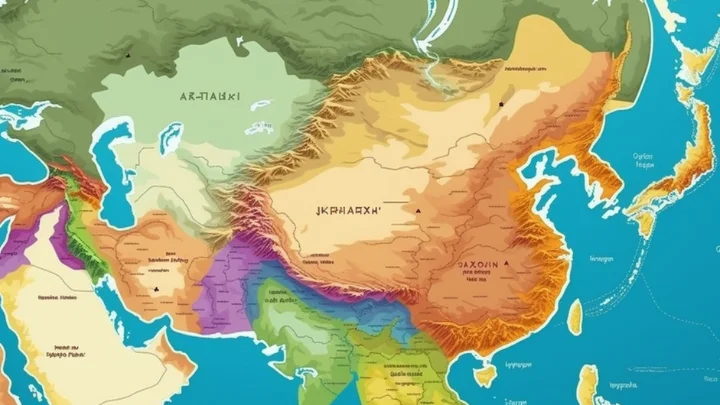
Afghanistan's Location
Afghanistan’s geographical location is a vital piece of its identity, shaping its role as a crossroads of cultures, trade, and history. Understanding where Afghanistan is situated on the world map provides a foundational perspective on its place in the broader context of South Asia and Central Asia.
Continent and Region: Afghanistan is a landlocked nation located in the heart of Asia, straddling the border between South Asia and Central Asia. It is part of the larger region of South Asia, which encompasses countries like India, Pakistan, and Nepal, while also sharing geographical and cultural ties with Central Asian nations like Turkmenistan, Uzbekistan, Tajikistan, and Kyrgyzstan.
A Bridge Between South Asia and Central Asia: Afghanistan serves as a natural bridge, linking South Asia to Central Asia. This unique position has earned it the nickname, “Heart of Asia.” To the south and east, Afghanistan shares borders with countries such as Pakistan and India, firmly placing it within the South Asian sphere. But to the north, it rubs shoulders with the Central Asian nations of Turkmenistan, Uzbekistan, and Tajikistan. This strategic location has made Afghanistan a historically vital crossroads for trade, culture, and ideas. It has been a melting pot where South Asian, Persian, Turkic, and Central Asian influences converge. The famous Silk Road, an ancient trade network that connected the East to the West, passed through this very land, leaving an indelible mark on its culture and history.
Beyond the geopolitical significance, Afghanistan’s role as a geographical bridge is evident in its diverse landscapes. From the towering peaks of the Hindu Kush in the north to the arid deserts of the south, it showcases a microcosm of the diverse terrains that South Asia and Central Asia have to offer.
Bordering Countries: Afghanistan shares its borders with an impressive array of neighboring countries. Pakistan is to the east and southeast, Afghanistan shares a long border with Pakistan. This border is not only geographically significant but also plays a crucial role in regional geopolitics and trade. Iran is situated along Afghanistan’s western border, and they share historical and cultural connections. Turkmenistan lies to the northwest, another Central Asian nation. Afghanistan shares borders with both Uzbekistan and Tajikistan. These Central Asian neighbors have contributed to the culture of the region. In the northeastern corner, Afghanistan’s border touches China, marking its connection to East Asia.
Time Zone: Afghanistan operates on Afghanistan Time (AFT), which is UTC+4:30. This time zone is distinct from its neighbors, reflecting the nation’s unique geographical position.
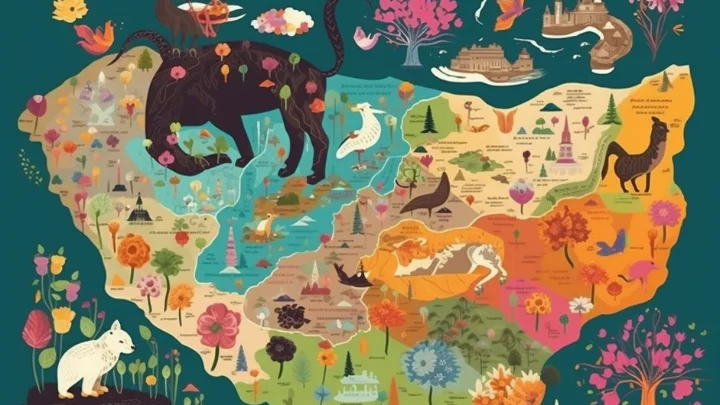
All About the Flag and National Symbols
Afghanistan proudly boasts a national emblem that reflects its unique connection to the natural world. The Afghan flag, while simple in design, carries profound symbolism, and the choice of national animal, bird, and flower further underscores the nation’s deep appreciation for its natural heritage.
The Afghan National Flag: The Afghan national flag is a vibrant banner that features three equal vertical stripes. From left to right, the colors are black, red, and green, with the national emblem in the center. Each color carries its own meaning: black represents the dark past, red symbolizes the bloodshed for independence, and green signifies hope for a bright future. The national emblem in the center combines a mosque with a pulpit and flags, beautifully encapsulating Afghanistan’s Islamic heritage, and the quest for sovereignty. In recent years, Afghanistan has seen changes in its national flag as a result of shifts in political leadership. The flag now also includes the flag of the Taliban, reflecting the evolving political landscape of the country.
The Majestic Snow Leopard: Afghanistan’s national animal, the snow leopard (Panthera uncia), epitomizes the country’s rugged and untamed natural landscapes. This elusive big cat, adorned with its thick fur and captivating spots, roams the high-altitude regions of the Hindu Kush and Pamir Mountain ranges. The snow leopard’s significance in Afghanistan extends beyond its striking appearance; it embodies the nation’s commitment to preserving its unique biodiversity. The snow leopard’s role as the national animal serves as a reminder of the need for conservation efforts in the face of environmental challenges. This remarkable creature has adapted to the harsh and often unforgiving terrain of Afghanistan’s mountains, symbolizing the resilience of both wildlife and the Afghan people.
The Golden Eagle: Afghanistan’s national bird is the golden eagle (Aquila chrysaetos), a powerful and majestic bird of prey that soars high above the country’s diverse landscapes. The golden eagle holds a revered place in Afghan culture, symbolizing freedom, strength, and determination. With its keen eyesight and formidable hunting skills, this bird embodies the spirit of resilience that characterizes Afghanistan’s people and their land.
The Tulip: The national flower of Afghanistan is the tulip (Tulipa), a bloom that graces its landscapes with vibrant colors. The tulip symbolizes renewal and growth, representing the nation’s hope for a brighter future after decades of challenges and conflict. Its presence on the Afghan flag reflects the enduring spirit of the Afghan people and their determination to flourish, much like this resilient flower.
In celebrating these national symbols, Afghanistan pays homage to its past, embraces the present, and looks forward to a future where the resilience of its people and the beauty of its natural world attempt to thrive. These emblems serve as a reminder of the deep connections between the nation’s geography, culture, and the enduring spirit of its people.

Capital City Spotlight: Kabul
Kabul, the capital city of Afghanistan, is a place where the country’s rich history and vibrant culture converge with the hustle and bustle of a modern metropolis. As the political and economic epicenter of Afghanistan, Kabul plays a pivotal role in shaping the nation’s identity and future.
A Glimpse into Kabul’s History: Kabul’s history can be traced back over 3,500 years, making it one of the oldest continuously inhabited cities in the world. It has witnessed the rise and fall of empires, including the Durrani, the Mongol, the Persian, Mauryan, and Kushan civilizations just to name a few. The city’s name is thought to have been derived from the ancient Sanskrit word “Kubhā,” meaning “water.” Kabul’s strategic location along the Silk Road made it a vital trade and cultural hub for centuries.
Cultural and Architectural Diversity: Kabul’s cultural heritage is rich and diverse, reflecting the mingling of various ethnic groups, including Pashtuns, Tajiks, Hazaras, and Uzbeks. This diversity is evident in the city’s traditions, cuisine, and arts. The city is home to numerous historical and architectural treasures, such as the Babur Gardens, a UNESCO World Heritage Site, and the Kabul Museum, which houses a collection of Afghan artifacts that provide a glimpse into the nation’s history.
A Hub of Political Activity: Kabul has long served as the political heart of Afghanistan. It is where the country’s government institutions, including the presidential palace and the National Assembly, are located. Throughout Afghanistan’s history, Kabul has been a center of power and decision making, often reflecting the nation’s complex political dynamics.
Economic Significance: The economic vitality of Kabul is undeniable. It is the country’s financial and commercial center, home to a bustling marketplace where goods from across Afghanistan and neighboring countries are traded.
Challenges and Resilience: Kabul, like many major cities, faces its share of challenges, including issues related to infrastructure, security, and urbanization. However, the resilience of its people remains a source of hope and inspiration. Despite the challenges, Kabul continues to grow and evolve, with a young and dynamic population driving hope for change and progress.
Kabul stands as a symbol of the nation’s enduring spirit. Its history, culture, and significance as the political and economic center underscore the complexity and vibrancy of this extraordinary country. Beyond the headlines, Kabul is a place where the past meets the present.
Other Major Cities
Afghanistan contains several major cities, each with its own unique character, history, and significance. As we travel the country’s geography, let’s pause to explore some of its major cities and uncover their cultural, historical, and economic importance.
Herat: Located in western Afghanistan, Herat is a city steeped in history, dating back to ancient times. It was a prominent center of trade, culture, and learning along the Silk Road. Herat is renowned for its stunning architecture, including the exquisite Herat Citadel and the Herat Grand Mosque. These structures showcase the city’s rich architectural heritage. Herat had a diverse population, and at one time was a vibrant arts and crafts scene.
Kandahar: Kandahar, located in southern Afghanistan, holds great historical importance as one of the oldest cities in the region. It has witnessed the rise and fall of empires and has been a center of trade and culture for millennia. Kandahar boasts a strong Pashtun cultural identity, with traditions and customs that have been preserved for generations. The city’s bazaars are a treasure trove of Afghan craftsmanship. Kandahar serves as a major agricultural and trade center, known for its production of fruits, nuts, and textiles. It plays a vital role in the country’s economy.
These major cities offer a glimpse into Afghanistan’s geography. They are not just urban centers but living embodiments of the country’s history, culture, and economic activities.
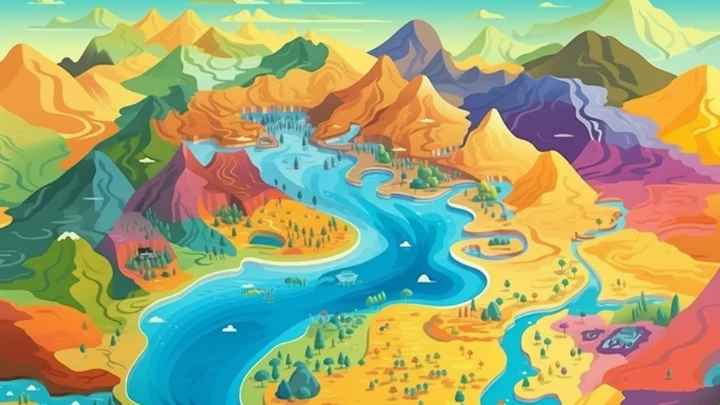
Physical Geography of Afghanistan
Afghanistan’s physical geography is made up of diverse landscapes and climatic zones, marked by mountains, vast plains, and arid deserts. Let’s take a closer look at the various aspects of Afghanistan’s physical geography to better understand its natural features and challenges.
Diverse Topography: Afghanistan’s topography is incredibly diverse. It features high mountain ranges, extensive plateaus, and vast plains. The country’s elevation ranges from the towering peaks of the Hindu Kush to low-lying desert regions.
Hindu Kush Mountain Range: The Hindu Kush range, which stretches across much of Afghanistan, is of immense significance. These mountains not only contribute to the country’s dramatic topography but also serve as a geographical barrier that has influenced historical trade routes and cultural exchange.
Climate Zones: Afghanistan experiences a range of climate zones due to its geographical diversity. These include arid and semiarid regions in the south and west, as well as alpine and continental climates in the central and northern areas.
Temperature Variations: The temperature variations throughout the year can be extreme, with hot summers and cold winters in the lowlands. In the mountainous regions, especially the Hindu Kush, winters can be harsh, and heavy snowfall is common.
Major Rivers: Afghanistan is endowed with several significant rivers, including the Amu Darya and the Kabul River. The Amu Darya forms part of the northern border and is vital for irrigation and water supply. The Kabul River flows through the capital city, Kabul, supporting agriculture and providing a source of freshwater.
Wakhan Corridor: Tucked away in Afghanistan’s northeastern corner lies the Wakhan Corridor, a slender land strip that serves as a geographical and historical marvel. Stretching about 220 kilometers long and varying between 13 to 65 kilometers wide, this corridor is a strategic buffer zone created in the 19th century during the Great Game between the British and Russian empires. It’s flanked by Tajikistan to the north and Pakistan to the south, with its eastern end brushing the borders of China. The Wakhan Corridor is not just a geopolitical anomaly but also a region of stunning natural beauty. It’s a part of the Pamir Mountains, nicknamed the ‘Roof of the World’, where the Himalayas, the Karakoram, the Kunlun, and the Hindu Kush ranges meet. This rugged, remote area, with its high-altitude landscape and distinctive culture, remains one of the few untouched wildernesses in the world, offering a unique glimpse into traditional Afghan life far removed from the turmoil experienced in other parts of the country.
Importance for Agriculture: These rivers play a crucial role in Afghanistan’s agriculture, allowing for irrigation and the cultivation of crops that sustain the population. The management of these water bodies is essential for the country’s food security.
Natural Hazards: Afghanistan is prone to a range of natural hazards, including earthquakes, avalanches, and landslides. Earthquakes, in particular, are relatively common due to the country’s position along seismic fault lines. Earthquakes can alter the terrain, while avalanches and landslides pose risks to communities in mountainous regions.
Afghanistan’s physical geography is a complex and captivating mosaic of natural features and challenges. From its towering mountain ranges to its fertile valleys and arid deserts, the country’s geography has shaped its history, culture, and way of life. As we continue to explore Afghanistan’s geography, we’ll gain a deeper appreciation for the unique characteristics that define this remarkable nation.
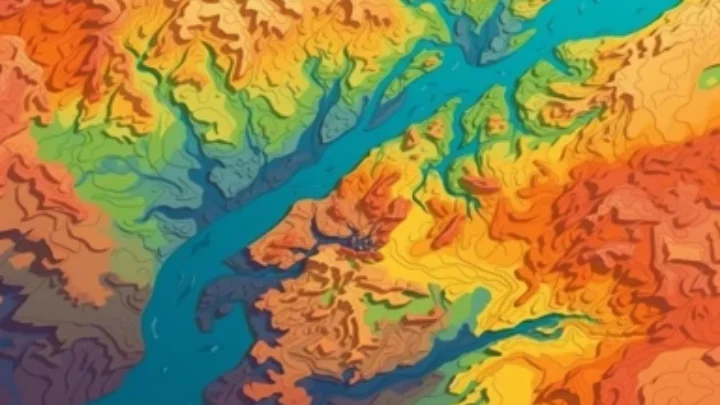
Environmental Concerns
Afghanistan faces several environmental challenges, including deforestation and water scarcity, which have significant consequences for the country’s ecology, agriculture, and livelihoods. Let’s look into these pressing environmental concerns and explore efforts to address them.
Deforestation: Deforestation is a critical environmental concern in Afghanistan. The country has experienced extensive tree loss due to various factors, including logging, land conversion, and resource extraction. The consequences of deforestation are far-reaching, impacting both the environment and society. Deforestation leads to soil erosion, loss of biodiversity, and changes in local climate patterns. It exacerbates the vulnerability of communities to natural disasters like flooding and landslides. Moreover, the loss of forests affects wildlife habitats and contributes to a decline in ecosystem services.
Water Scarcity: Afghanistan faces significant challenges related to water scarcity. Access to clean and reliable water sources is limited in many parts of the country, impacting not only daily life but also agriculture, a critical sector of the economy. Water scarcity affects agricultural productivity and food security. Afghan farmers rely heavily on irrigation, making water availability a determining factor for crop success. Variability in water supply can lead to crop failures and economic hardship.
Addressing environmental concerns like deforestation and water scarcity is pivotal for Afghanistan’s sustainable development. Efforts to combat these challenges not only protect the environment but also contribute to improved livelihoods, food security, and resilience in the face of climate change. As Afghanistan continues to work towards a more sustainable future, these initiatives will play a vital role in safeguarding its natural resources.

Human Geography of Afghanistan
Afghanistan’s human geography reflects the interconnectedness between people, culture, and the land. Afghanistan faces significant challenges in achieving economic development, including security concerns, political instability, and access to international markets.
Population Distribution: The majority of Afghanistan’s population is concentrated in the lowlands and valleys, particularly along the northern and eastern borders. Cities like Kabul, Herat, and Kandahar serve as population hubs. Population distribution is heavily influenced by geography. The availability of arable land, water resources, and favorable climates in these regions make them attractive for settlement and agriculture.
Urban vs. Rural: Afghan cities are characterized by diverse communities and bustling marketplaces. Kabul, as the capital and largest city, is a melting pot of cultures and traditions. Urban areas offer different opportunities, attracting people from rural regions. Rural Afghanistan, on the other hand, is often characterized by subsistence agriculture and traditional ways of life. Remote villages in the mountains and deserts maintain distinct cultural practices and self-sustaining communities.
Cultural Influence: Afghanistan’s geography has a profound impact on its culture. For instance, the mountainous terrain of the Hindu Kush range has given rise to resilient mountain communities with unique traditions, while the arid deserts of the south have shaped distinct ways of life. Afghanistan boasts a rich cultural heritage that includes music, art, and traditions. Afghan music, particularly the sounds of traditional instruments like the rubab and tabla, is deeply ingrained in the culture. Traditional Afghan carpets and intricate calligraphy are renowned forms of art.
Language Diversity: Afghanistan is a linguistically diverse nation with multiple languages spoken. Pashto and Dari are the most prominent languages and are used for official purposes. Numerous regional languages and dialects also exist.
Cuisine: Afghan cuisine reflects the diversity of the land, with hearty dishes like kebabs, pilaf, and naan bread that are well-suited to the rugged geography. Regional variations in cuisine are influenced by the availability of ingredients.
Economic Aspects: Afghanistan’s economy encompasses various activities, including agriculture, mining, and trade. Agriculture plays a crucial role with the cultivation of wheat, barley, and fruits. The country is also rich in mineral resources, including natural gas, copper, and lithium.
Agriculture: Agriculture is a vital economic activity, with the geography of fertile valleys supporting the cultivation of crops like wheat, barley, and fruits. It provides livelihoods for a significant portion of the population.
Transportation Infrastructure: Afghanistan had been investing in improving its transportation infrastructure, including roads, highways, and airports. Major cities are connected by a network of roads and highways, facilitating trade and travel. The Kabul-Kandahar Highway is a vital transportation artery, connecting the capital to the country’s second largest city, Kandahar. The Salang Pass tunnel, which traverses the Hindu Kush mountains, is a critical route for north south travel.
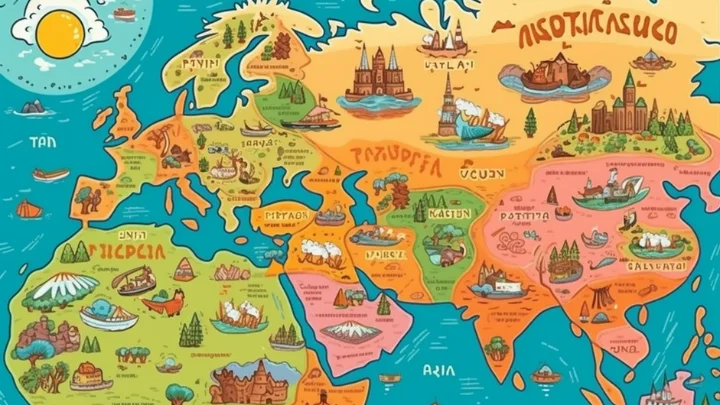
Cultural Diversity in Food
The cultural diversity within Afghanistan is reflected in its cuisine. Different regions have their own culinary traditions, influenced by local ingredients and cultural practices.
Regional Variations: For example, in the mountainous regions of the Hindu Kush, dairy products like yogurt and cheese play a prominent role in the cuisine. In the south, dishes are spicier and often incorporate legumes and rice.
Nomadic Traditions: Nomadic communities in the desert regions have a unique diet that includes dried fruits, nuts, and preserved meats, which are suitable for their mobile lifestyle.
Traditional Afghan Cuisine
Afghan cuisine is characterized by its hearty and flavorful dishes, often prepared with fresh and locally sourced ingredients. The geography of Afghanistan influences the types of foods that are commonly consumed.
Kebabs: Grilled meat kebabs, often made with lamb or chicken, are a staple in Afghan cuisine. They are typically seasoned with spices and served with bread, rice, and vegetables.
Rice Dishes: Afghan rice dishes, such as pilaf (pulao) and qabili palaw, are aromatic and feature ingredients like saffron, raisins, and carrots. These dishes are often prepared for special occasions.
Bread: Afghan naan bread, known as “naane afghani,” is a vital part of every meal. It is traditionally baked in tandoor ovens and served warm.
Influences from Neighboring Countries
Afghan cuisine has been significantly influenced by its neighboring countries, contributing to a diverse and flavorful culinary tradition. Borders shared with Pakistan, Iran, and Central Asian nations have infused Afghan dishes with a medley of spices, flavors, and cooking techniques. Spices like cumin, coriander, and cardamom, commonly used in the region, add depth and complexity to Afghan recipes. These cross-cultural culinary exchanges have created a unique fusion of flavors that make Afghan cuisine a delightful exploration for food enthusiasts.

Cultural Heritage and Famous Landmarks
Afghanistan boasts a wealth of cultural heritage and historical landmarks that have endured for centuries, despite the challenges of time and conflict. From ancient archaeological wonders to breathtaking natural formations, here is a glimpse into some of Afghanistan’s most renowned UNESCO World Heritage sites and other famous landmarks:
UNESCO World Heritage Sites
Buddhist Monuments at Bamyan Valley: The Bamyan Valley is renowned for its colossal Buddha statues carved into the cliffs, a testament to Afghanistan’s rich Buddhist history dating back to the 2nd century CE.
Minaret and Archaeological Remains of Jam: Located in the rugged Ghor province, the Minaret of Jam is an architectural marvel and a UNESCO site surrounded by the archaeological remnants of an ancient city.
Historic Center of Herat: Herat, one of Afghanistan’s ancient cities, is celebrated for its exquisite Islamic architecture, including the magnificent Herat Citadel and the vibrant Herat Grand Mosque.
Cultural Landscape and Archaeological Remains of the Bamiyan Valley: Beyond the iconic Buddhas, the Bamiyan Valley holds a trove of archaeological treasures, including cave dwellings and ancient settlements.
Other Famous Landmarks
Kabul: Kabul, the capital of Afghanistan, is a city steeped in history and culture. Notable landmarks include the Kabul Museum, the Kabul Citadel (Arg), and the serene Babur’s Gardens.
Kandahar – The City of Kings: Kandahar, with its ancient roots dating back to Alexander the Great, boasts landmarks like the Shrine of the Cloak of the Prophet and the stunning Arghandab Valley.
Mazar-e-Sharif: The city of Mazar-e-Sharif is home to the stunning Blue Mosque, a sanctuary renowned for its azure-tiled beauty and spiritual significance.
Band-e Amir National Park: Located in the Bamyan province, this park features a series of crystal-clear, cobalt-blue lakes set amidst dramatic limestone canyons, creating a surreal and breathtaking landscape.
Panjshir Valley: This picturesque valley, flanked by rugged peaks, is famous for its natural beauty and as the legendary stronghold of Afghan resistance against invaders throughout history.
These UNESCO World Heritage sites and famous landmarks in Afghanistan are a testament to the nation’s rich history, cultural heritage, and the enduring spirit of its people.
Wrap Up...
In this exploration of Afghanistan’s geography, we’ve journeyed through a land of remarkable diversity and complexity. From its strategic location in Central Asia to the towering peaks of the Hindu Kush and the fertile plains along its rivers, Afghanistan’s physical landscape is a testament to the awe-inspiring beauty of our world. However, Afghanistan’s geography is not just natural wonders; it is also a myriad of human experiences, cultures, and traditions that have evolved over millennia.
We’ve investigated the population centers, languages, and rich culture that define Afghanistan’s human geography. We’ve discussed the economic activities that shape the nation’s livelihoods. Afghanistan’s people, their diversity, and their resilience in the face of adversity are an integral part of the country’s geography. Moreover, we’ve examined the environmental concerns that Afghanistan faces, including deforestation and water scarcity. These challenges, while daunting, are also opportunities for sustainable development and the preservation of this unique geography for future generations.
Understanding Afghanistan’s geography is not just an academic exercise; it is a window into the soul of a nation. It reveals the connections between people and the land they call home, the influences of nature on culture and traditions, and the economic prospects that geography offers. Beyond the political contexts and headlines, Afghanistan’s geography is a source of inspiration and appreciation for the world’s diversity.
As we conclude our journey through Afghanistan’s geography, let us remember the importance of approaching this nation with an open mind and a desire to explore beyond political narratives. Afghanistan is a land of stories waiting to be told, of landscapes waiting to be cherished, and of people waiting to share their rich heritage. It is a place where geography converges with the resilience of the human spirit, offering us a glimpse into a world both complex and beautiful.


